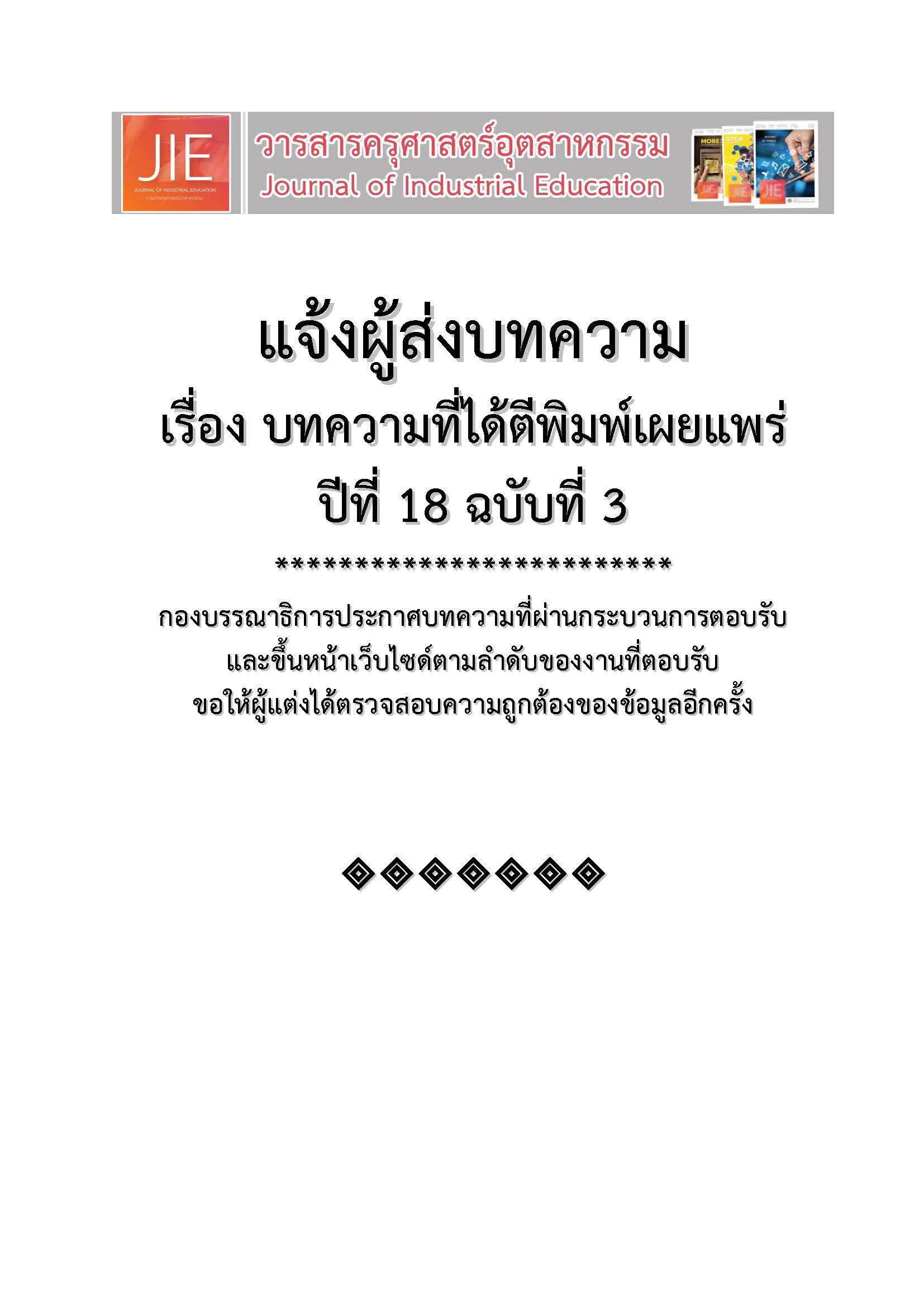BEHAVIORS FOR ORGANIC FARMING PRODUCTS CONSUMPTION OF CONSUMERS IN LADKRABANG, BANGKOK THAILAND
Keywords:
consuming behavior, organic farming products, consumer, needAbstract
The Study aimed to explore demographic attributes and factors having relationships with behaviors on organic farming products. The sample group consisted of 435 consumers in Ladkrabang, Bangkok and they were obtained by convenience sampling. A set of questionnaires was used for data collection and analyzed by using frequency, percentage, mean, standard deviation, t-test and One – way Analysis of variance. Besides, an interview schedule was conducted with another sample group of 40 consumers. Obtained data were sorted, interpreted, and concluded.
Based on the questionnaire, results of the study revealed that most of the respondents (61.61 %) were female, 41-50 years old (40.23 %), bachelor’ s degree graduates (60.92 %), and their monthly income was 10,000 baht and below. The respondents had a high level of need for organic farming product consumption (= 3.77, S.D.= 0.52 ). Based on market mix factors, they needed for product most (
= 3.94, S.D.= 0.56 ), followed by price (
= 3.77, S.D.= 0.60 ) and place/distribution channel (
= 3.71, S.D.= 0.67 ). However they least needed for market promotion (
= 3.67, S.D.= 0.65 ). It was also found that personal factor on sex, age, marital status, and educational attainment had no effect on needs of consumers. However, occupation and monthly income had an effect on needs for consumption of organic farming products with a Statistical significance level at 0.05. According to an interview, products to be sold in KMITL and Ladkrabang should be vegetables, fruits and beef/pork. However, it should not be a big amount but enough for needs of consumers since the products would always be fresh. Also, the products should be wrapped or contained in a natural container such as banana leaf and paper. And the price is not too high than the market
References
Mahamad, R. 2005. Innovation on the management of agricultural resources for organic farming : A case study of organic rice production farmer group, Kudchum District, Yasothon Province. Bangkok : Kasetsart University, Graduate School
Ministry of Commerce. 2015. Organic Farming. Retrieved March 10,2018, from https://www.organicnaturalexpo.com
Kramol, P. 2014. Factors Affecting Purchasing Behavior of Organic and Pesticide-Free Produce in Farmers’ Markets in Chiang Mai Province. Khon Kaen Agriculture Journal. 42 (2), pp.227-234
Taweerat, P. 2000. Research methodology on behavioral science and social science. Bangkok office of Educational Testing and Psychology Srinakharinwirot University
Cronbach, Lee Joseph. 1970. Essentials of Psychological Testing. 3rd ed. New York: Harper and Row.
Ruengpraphan, Ch. 2000. Basic statistics with sample analysis using Minitab SPSS and SAS programs. Khon Kaen: Khon Kaen University
Samarjai, C. 2007. Consumer behavior. Bangkok: SE-Education Company Limited.
Ekudompong, P. and Khanthanurak, S.2016. A study of behaviors and factors affecting the selection of interactive newspaper. Industrial Education journal, 15 (3), p. 90-97
Satawathib, P.1990. Communication Arts. 10th edition. Bangkok: Imprint Limited Partnership.
Ueasangkomsate, P. 2016. Consumers’ attitude, intention and buying behavior toward organic foods. Chulalongkorn business review, 38 (149), p. 58-83
Kasikornthai Research Center 2017. Organic farming products: An opportunities of Thailand's in the world market. Retrieved, March 21,2018, from https://www.organic.moc.go.th/th/production
Sproles, G. B. & Kendall, E. L. 1986. A methodology for profiling consumers’ decision-making styles. Journal of Consumer Affairs, 20 (2), 267-279
Downloads
Published
How to Cite
Issue
Section
License
"The opinions and contents including the words in papers are responsibility by the authors."
"ข้อคิดเห็น เนื้อหา รวมทั้งการใช้ภาษาในบทความถือเป็นความรับผิดชอบของผู้เขียน"



